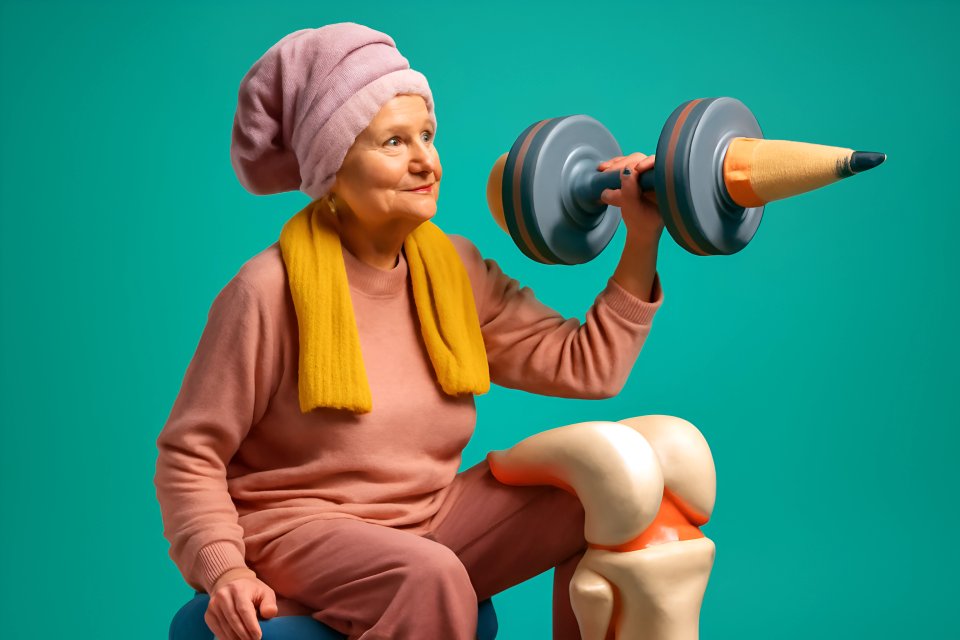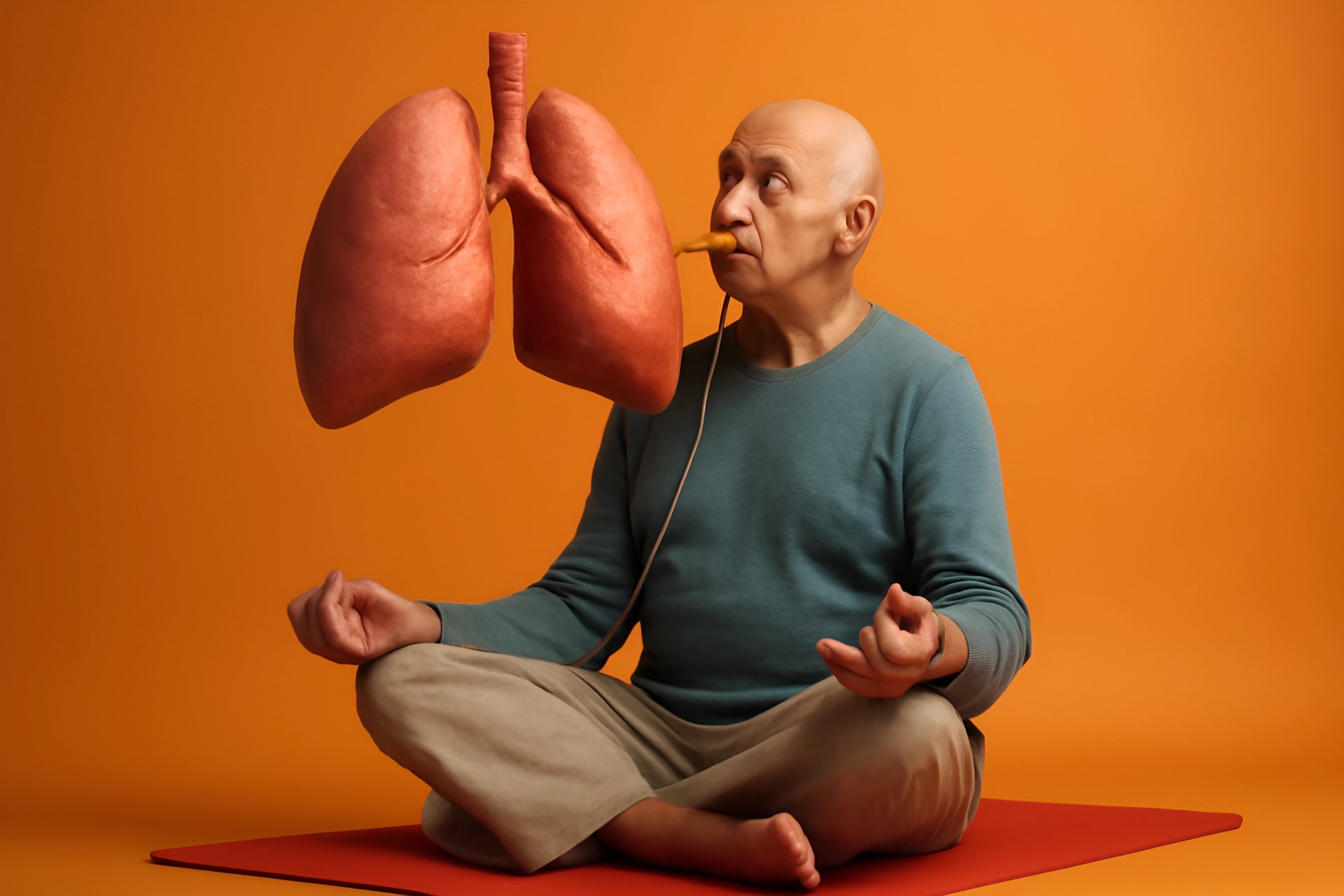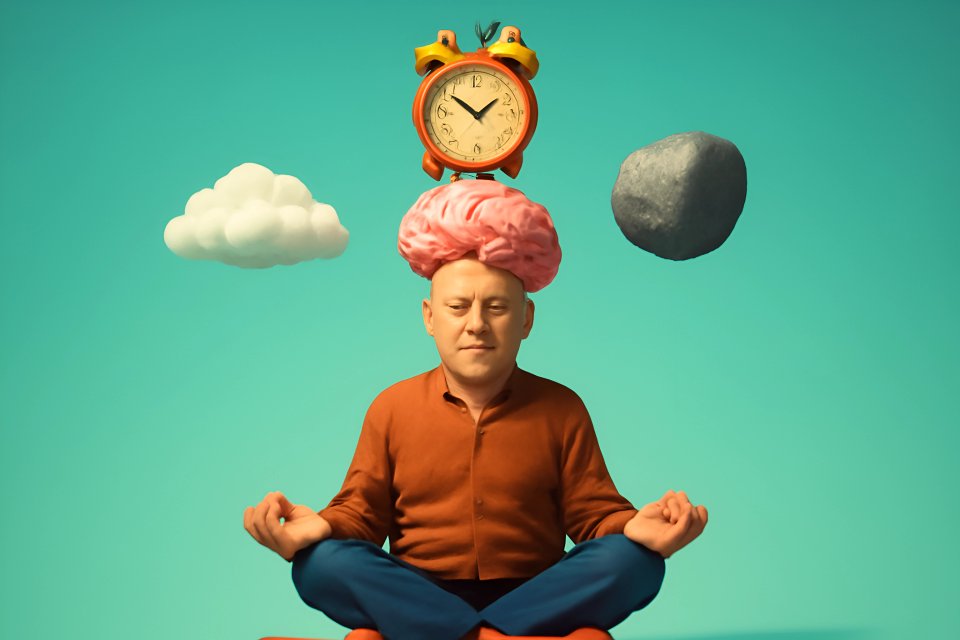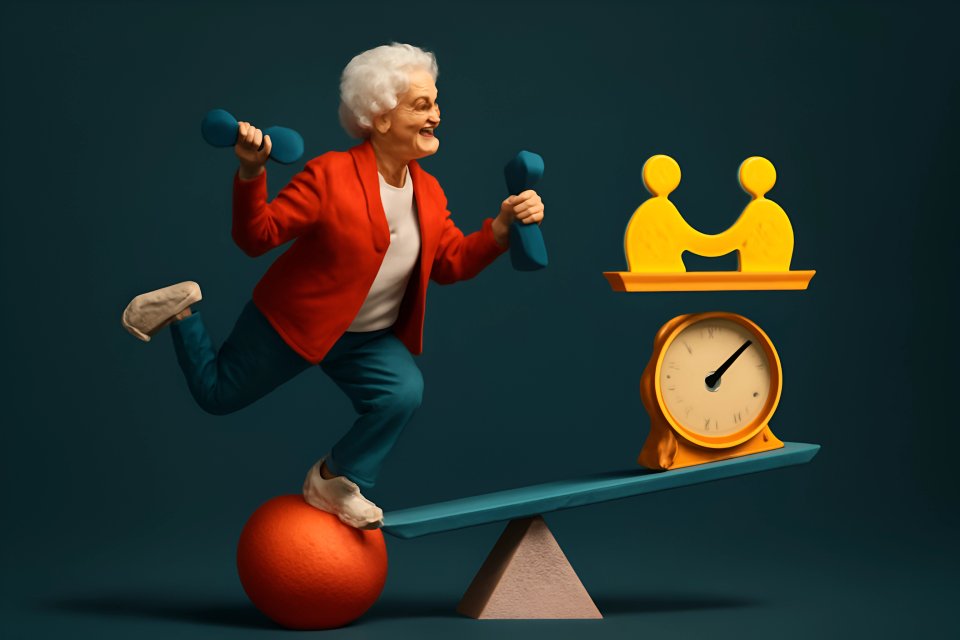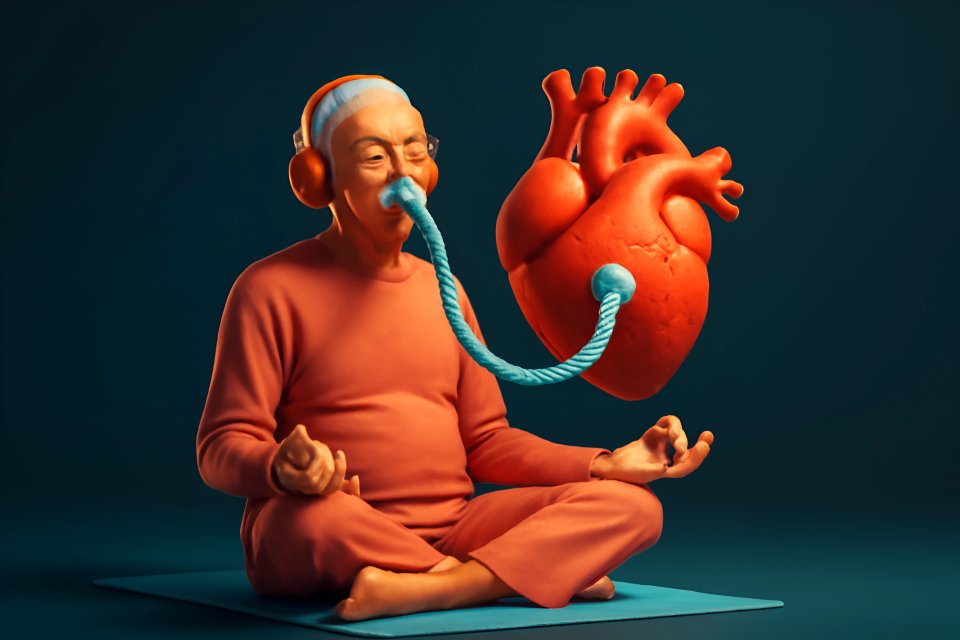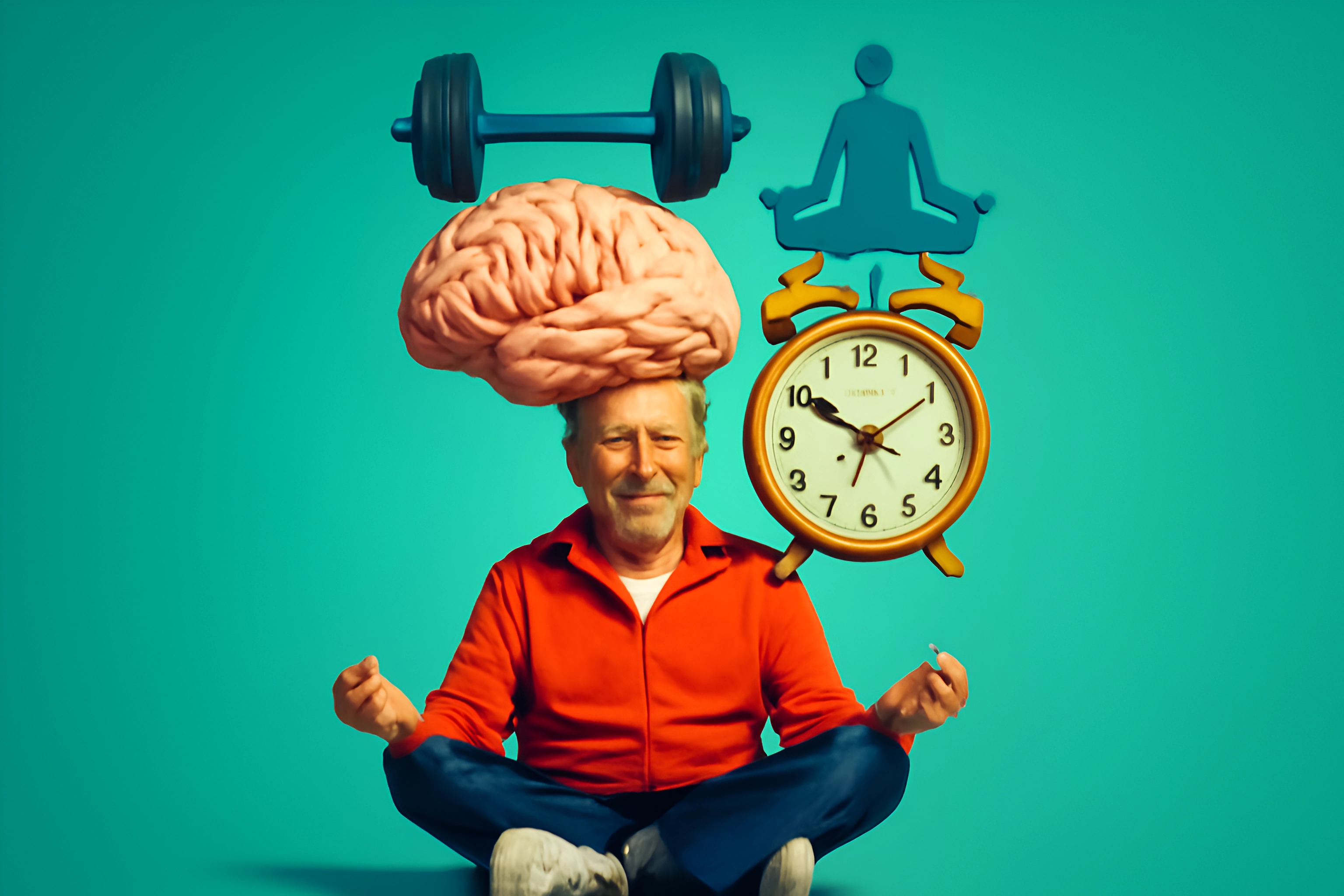
Ever feel like your mind is racing, even when your body wants to slow down? Whether it's worrying about the grandkids, managing health appointments, or simply the noise of modern life, stress can feel like an unwelcome companion after 50. It can steal your energy, cloud your thoughts, and keep you from enjoying the vibrant life you deserve.
But what if you had a personal toolkit to reclaim your peace, right at your fingertips? What if you could build a fortress of calm around your mind, one gentle breath and one simple movement at a time? The truth is, you can. The powerful, science-backed synergy between mindfulness and light exercise is one of the most effective ways to manage the pressures of daily life.
In this post, we’ll walk you through simple, step-by-step stress-busting techniques for seniors that you can start using today. No complicated equipment or intense workouts—just gentle practices for a calmer mind and a healthier you.
Why Stress Management is Non-Negotiable After 50
Let's be honest: managing stress isn't just a nice idea; it's a fundamental pillar of healthy aging. Chronic stress isn't just a feeling—it's a physical state that can have serious consequences. According to health experts at Johns Hopkins Medicine, prolonged stress can contribute to high blood pressure, weaken the immune system, and even impact cognitive function, making that "brain fog" feel much worse.
The science is clear. When you're stressed, your body is flooded with hormones like cortisol. While useful in a true emergency, a constant drip of these chemicals wears you down, depletes your energy, and can disrupt your sleep. The American Psychological Association notes that mindfulness is a research-proven way to reduce this stress response, helping your body and mind return to a state of balance.
But this isn't about fear; it's about empowerment. Taking control of your stress is one of the most proactive steps you can take for your long-term health and independence. By actively managing stress, you're not just avoiding negative outcomes; you're unlocking more energy, sharper focus, and a greater capacity for joy in your daily life.
Calming the Mind: Simple Mindfulness Tips for Older Adults
So, what is this powerful tool called "mindfulness"? It’s simply the practice of paying attention to the present moment without judgment. It’s about noticing your breath, the feeling of your feet on the floor, or the taste of your morning coffee, pulling your mind away from the "what-ifs" and grounding it in the "right now."
This simple act of paying attention has profound benefits. Practicing mindfulness for older adults has been shown to reduce feelings of anxiety and improve overall emotional well-being. It’s a skill that strengthens with practice, giving you a reliable anchor in any storm.
The best part? You don't need a special cushion or a silent retreat to begin. These techniques are designed to fit seamlessly into the life you're already living.
Technique 1: The 3-Minute Mindful Breath
This is your emergency brake for a racing mind. It’s a simple, powerful technique you can use anywhere, from the grocery store line to the doctor's waiting room, to instantly restore a sense of calm.
Find a comfortable seat and gently close your eyes if you wish. Place a hand on your belly to feel the movement of your breath. Follow this simple, calming pattern:
Inhale slowly through your nose for 4 seconds.
Hold the breath gently for 2 seconds.
Exhale slowly through your mouth for 6 seconds.Repeat this cycle for just a few minutes, focusing all your attention on the rhythm of your breath. For a deeper dive into these practices, explore our guide on deep breathing and meditation techniques for seniors.
Technique 2: The Body Scan for Relaxation
Physical tension is often where stress loves to hide. A body scan is a wonderful way to release that tension before bed or anytime you feel wound up. It’s a core practice recommended by experts at the Mayo Clinic for its stress-reducing effects.
Lie down or sit comfortably and close your eyes. Bring your attention to your toes, noticing any sensations—warmth, coolness, tingling—without judgment. Slowly, mentally travel up your body—through your feet, ankles, calves, and so on—all the way to the top of your head, simply noticing how each part feels.
This isn't about fixing anything; it's about awareness. By simply noticing the tension in your shoulders or jaw, you often give it permission to release. This practice is a fantastic way to reconnect with your body and prepare for a restful night's sleep.
Technique 3: Mindful Observation
Worried thoughts often travel in circles, replaying the same script over and over. Mindful observation is a simple way to break that loop by focusing your attention outward. This is one of the easiest mindfulness activities for seniors in retirement to incorporate into your day.
Pick a simple object nearby—a houseplant, a cup of tea, a painting on the wall. For one minute, give it your full attention. Notice its colors, its shape, the way light hits it, its texture, and any smells associated with it.
By engaging your senses in the present moment, you give your worrying mind a much-needed break. This practice trains your focus and reminds you that there is a calm, quiet world available to you whenever you choose to notice it.
Moving the Body: Senior Stress Relief Exercises
Your body and mind are not separate entities; they are deeply connected. As Harvard Health Publishing explains, exercise reduces levels of the body's stress hormones, like adrenaline and cortisol. It also stimulates the production of endorphins, your body's natural mood elevators.
This doesn't mean you need to run a marathon to feel the benefits. Gentle, low-impact movement is incredibly effective for clearing your head and releasing physical tension. The key is to move in a way that feels good and honors your body's needs.
These simple senior stress relief exercises can be done at home with minimal or no equipment. They are designed to be safe, effective, and calming.
Technique 1: Gentle Neck and Shoulder Stretches
We carry so much of our daily stress in our neck and shoulders. Taking a few moments to release this area can provide immediate relief and prevent tension headaches.
While seated in a sturdy chair, sit up tall. Gently tilt your right ear toward your right shoulder, holding for 15-20 seconds. Return to the center and repeat on the left side.
Next, slowly roll your shoulders up toward your ears, then back and down, in a smooth, circular motion. Repeat this 5-10 times. Remember to breathe deeply and never push into pain, as advised by the National Institute on Aging's guide to exercise.
Technique 2: Chair Yoga Poses for Stability and Calm
Chair yoga offers all the mind-body benefits of traditional yoga without the risk of falling. It’s a fantastic way to improve flexibility, build strength, and calm your nervous system.
Try a Seated Cat-Cow. Sit on the edge of your chair with your feet flat on the floor. On an inhale, arch your back and look up, opening your chest (Cow Pose). On an exhale, round your spine and drop your chin to your chest (Cat Pose).
Repeat this fluid movement 5-8 times, syncing your breath with the motion. This simple flow gently massages the spine and encourages deep, calming breaths. For more ideas, check out our guide to mastering sustainable low-impact workouts for seniors.
Technique 3: Slow and Steady Tai Chi Movements
Tai Chi is often called "meditation in motion" for good reason. This ancient practice combines slow, deliberate movements with deep breathing, and research from the NCCIH shows its effectiveness in reducing stress.
A simple beginner move is "Parting the Wild Horse's Mane." Stand with your feet shoulder-width apart, knees slightly bent. Hold your hands in front of your belly as if holding a ball. Slowly shift your weight to your right leg as your right hand rises and your left hand lowers, as if parting a curtain.
The focus isn't on perfect form but on the slow, graceful quality of the movement and the connection to your breath. It’s a powerful way to improve balance while quieting the mind.
The Magic is in the Mix: Combining Movement and Mindfulness
Here is the secret that elevates these practices from helpful habits to a truly transformative toolkit: the real power is in doing them together. When you bring mindfulness to your movement, you turn a simple physical activity into a profound stress-relieving practice.
Think about your daily walk. Instead of letting your mind wander to your to-do list, try a Mindful Walk. Pay attention to the feeling of your feet hitting the pavement, the rhythm of your stride, the sensation of the breeze on your skin, and the sounds around you. As described in this guide to mindfulness exercises that also reduce stress, this turns a walk into a moving meditation.
The same principle applies to stretching. As you perform your gentle neck tilts or chair yoga poses, sync your breath with each movement. Inhale as you lengthen or lift, and exhale as you deepen the stretch or release. This breath-focused stretching transforms a simple routine into a powerful tool for calming your entire nervous system. For more ways to combine these practices, explore our post on integrative approaches for stress-free living.
Putting It All Together: A Sample 15-Minute Daily Routine
Building a new habit is easiest when it's simple and concrete. You don't need to set aside an hour a day. Just 15 minutes, broken into small, manageable chunks, can make a world of difference.
This routine is a template, not a rigid rule. Feel free to adapt it to your schedule and energy levels. The goal is consistency, not perfection.
Here is a simple way to integrate these stress-busters into your day:
| Time of Day | Duration | Activity |
|---|---|---|
| Morning | 5 Mins | Gentle Chair Stretches (3 mins) + Mindful Breathing (2 mins) |
| Afternoon | 5 Mins | Mindful Walking Break (indoors or outdoors) |
| Evening | 5 Mins | Chair Yoga Poses or a Body Scan (focusing on breath) |
By sprinkling these small moments of calm throughout your day, you prevent stress from building up. You are actively creating pockets of peace, ensuring your mind and body stay resilient and balanced.
Your Journey to a Calmer, More Vibrant You
Managing stress after 50 doesn't require drastic changes or overwhelming commitments. It’s about embracing small, consistent practices that honor both your mind and your body.
At FitOverFifty, we believe that aging with vitality is about having the right tools. By integrating these simple mindfulness and light exercise techniques, you are actively investing in your peace of mind and overall well-being. You have the power to create calm in your daily life, one breath and one gentle movement at a time.








